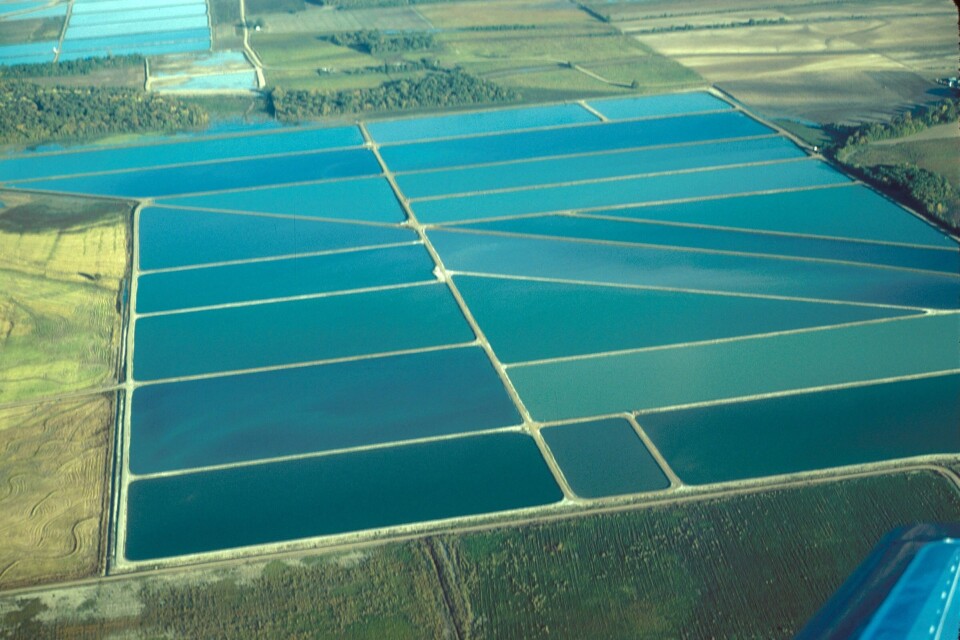
The "Blue Revolution" might fight hunger in Haiti
Opinion
Every once in a while a report pops out of nowhere that puts a realistic view on aquaculture as we know it today. In a recent posting by The Christian Science Monitor, Phil Cruver, who is president of the company KZO Sea Farms and a social entrepreneur who is passionate about the potential for the Blue Revolution for feeding the future, provided some thoughts about aquaculture and its potential for helping people in Haiti and the rest of the world overcome hunger and health problems. Here are some excerpts from Mr. Cruver`s office in Long Beach, California;
Like many developing countries, the Republic of Haiti imports most of its food. Of the 31 million eggs the population eats monthly, 30 million are imported from the Dominican Republic next door. Surrounded by the Caribbean Sea, the country spends up to $10 million a year to import twice as much fish as it can catch or raise. Solving the food-import dilemma with more agricultural production is problematic. And the dirt-poor country of 10 million people has very limited water resources. Almost every drop of fresh water goes to irrigation, and a growing population strains that supply. Most farmers are peasants without ownership of the postage-stamp-size lots they till. A "Blue Revolution" would provide these landless people with a piece of the sea and a much-needed source of protein.
Worldwide, half the fish consumed by humans is now farmed. It is the fastest-growing form of food production in the world, based on greater productivity of the sea over land. Moreover, none of Haiti's precious freshwater resources would be required for farming fish from the sea. Wild-fish harvesting is also not an option for Haiti. Its waters are overfished and stressed, creating a crisis for those who depend on fisheries for their livelihoods.
That leaves a new method in aquaculture that is just getting going around the world. It's being developed farther offshore, taking advantage of optimum currents for cultivating "free range" fish that are not sequestered in polluted bays and estuaries. These operations deploy cages in offshore waters, where currents quickly whisk away waste. And improvements in feed for farmed fish are reducing concerns about overharvesting of small fish that are used to nourish captive larger fish. Open-ocean marine aquaculture would do much to provide food security if it were adopted in poor, coastal countries. Haiti has 1,100 miles of coastline, and its waters extend seaward 200 miles as an exclusive economic zone. Free-range fish farming would augment Haiti's agricultural economy.
As a source of animal protein, farmed fish are a godsend in a grain-limited world. Seven kilograms of grain are required to produce one kilogram of beef, and four kilograms are needed for one such measure of pork. But only two kilograms of grain can produce one kilogram of fish. In terms of how much of an animal is actually consumed by people, fish also trump land livestock, with far greater edible mass. About 65 percent of the raw weight of finfish is eaten, compared with 50 percent for chicken and pigs.
The fecundity of finfish and shellfish also far surpasses the limited litters of livestock, allowing improvements in selective breeding practices for increased productivity. Endowed with prodigious powers of reproduction at early maturation, species in the sea can spawn millions of eggs several times a year. Modern genetic techniques and technologies are exploiting this characteristic for producing up to 40 percent greater growth rates and higher resistance to disease in just a few generations.
Consider the thousands of gallons of fresh water needed to produce a pound of food on land that could be saved by sea production of animal – and plant – species. And marine aquaculture is less susceptible than agriculture to the effects of climate change. As global temperatures rise, water tables are falling due to increased pumping for agriculture irrigation on a hotter planet. A modern marine aquaculture industry would give Haiti a competitive edge in the fastest-growing global food industry while relieving strain on its natural marine and agriculture water resources.
This fall, a cohort of Haitians is expected to come to the Florida Keys to learn the basics of marine science and sustainable, open-ocean cage farming. The intense two-week course will offer hands-on instruction in nursery, hatchery, and everything about the cages – how to assemble, deploy, and maintain them, and what to do in the event of a hurricane. This program will also provide the Haitians with the skills and knowledge to manage mariculture demonstration projects in their own country. That can then lead to launching commercial-scale operations. If Haitians – an industrious people fond of fish – can marry up with the offshore marine farming business, their country could improve its food import problem and malnourished population.
Then Haiti would be living up to the vision of Jacques Cousteau three decades ago: "We must turn to the sea with new understanding and new technology. We need to farm it as we farm the land."






















































